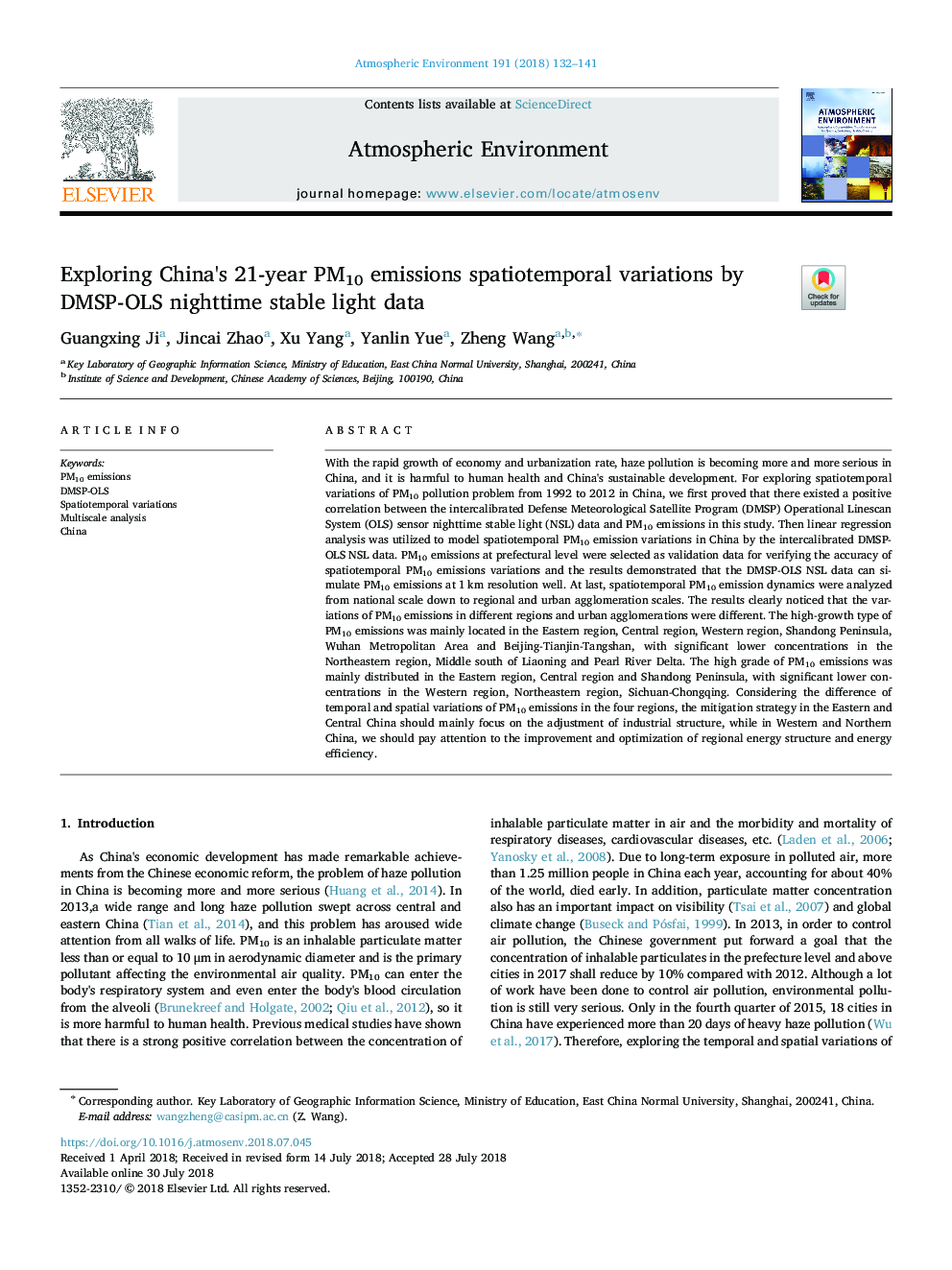| کد مقاله | کد نشریه | سال انتشار | مقاله انگلیسی | نسخه تمام متن |
|---|---|---|---|---|
| 8863385 | 1620283 | 2018 | 10 صفحه PDF | دانلود رایگان |
عنوان انگلیسی مقاله ISI
Exploring China's 21-year PM10 emissions spatiotemporal variations by DMSP-OLS nighttime stable light data
دانلود مقاله + سفارش ترجمه
دانلود مقاله ISI انگلیسی
رایگان برای ایرانیان
کلمات کلیدی
موضوعات مرتبط
مهندسی و علوم پایه
علوم زمین و سیارات
علم هواشناسی
پیش نمایش صفحه اول مقاله

چکیده انگلیسی
With the rapid growth of economy and urbanization rate, haze pollution is becoming more and more serious in China, and it is harmful to human health and China's sustainable development. For exploring spatiotemporal variations of PM10 pollution problem from 1992 to 2012 in China, we first proved that there existed a positive correlation between the intercalibrated Defense Meteorological Satellite Program (DMSP) Operational Linescan System (OLS) sensor nighttime stable light (NSL) data and PM10 emissions in this study. Then linear regression analysis was utilized to model spatiotemporal PM10 emission variations in China by the intercalibrated DMSP-OLS NSL data. PM10 emissions at prefectural level were selected as validation data for verifying the accuracy of spatiotemporal PM10 emissions variations and the results demonstrated that the DMSP-OLS NSL data can simulate PM10 emissions at 1â¯km resolution well. At last, spatiotemporal PM10 emission dynamics were analyzed from national scale down to regional and urban agglomeration scales. The results clearly noticed that the variations of PM10 emissions in different regions and urban agglomerations were different. The high-growth type of PM10 emissions was mainly located in the Eastern region, Central region, Western region, Shandong Peninsula, Wuhan Metropolitan Area and Beijing-Tianjin-Tangshan, with significant lower concentrations in the Northeastern region, Middle south of Liaoning and Pearl River Delta. The high grade of PM10 emissions was mainly distributed in the Eastern region, Central region and Shandong Peninsula, with significant lower concentrations in the Western region, Northeastern region, Sichuan-Chongqing. Considering the difference of temporal and spatial variations of PM10 emissions in the four regions, the mitigation strategy in the Eastern and Central China should mainly focus on the adjustment of industrial structure, while in Western and Northern China, we should pay attention to the improvement and optimization of regional energy structure and energy efficiency.
ناشر
Database: Elsevier - ScienceDirect (ساینس دایرکت)
Journal: Atmospheric Environment - Volume 191, October 2018, Pages 132-141
Journal: Atmospheric Environment - Volume 191, October 2018, Pages 132-141
نویسندگان
Guangxing Ji, Jincai Zhao, Xu Yang, Yanlin Yue, Zheng Wang,